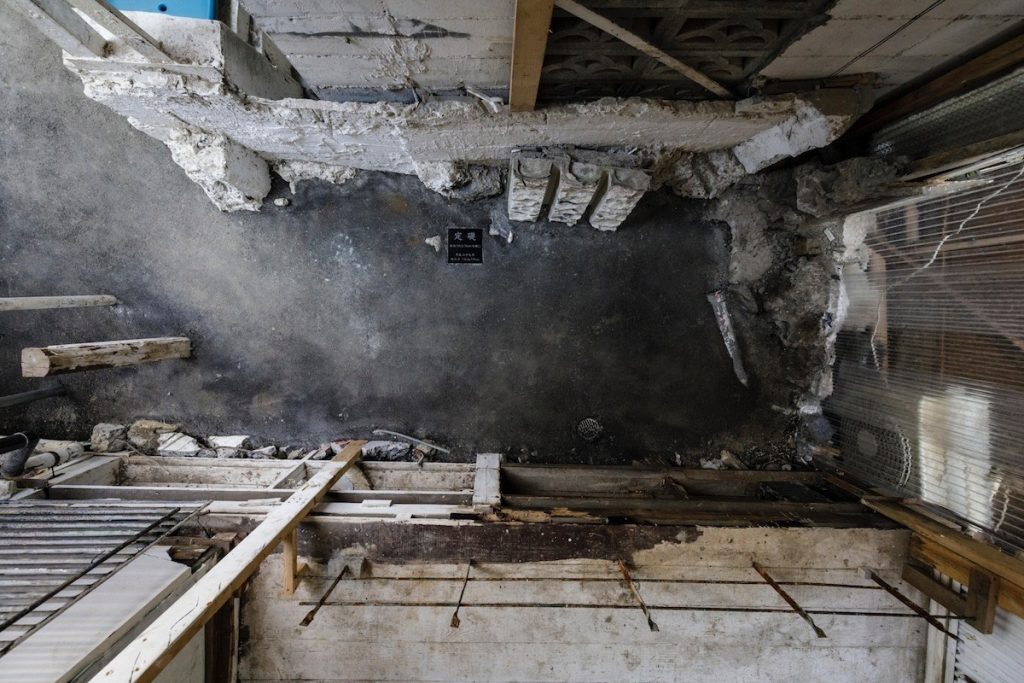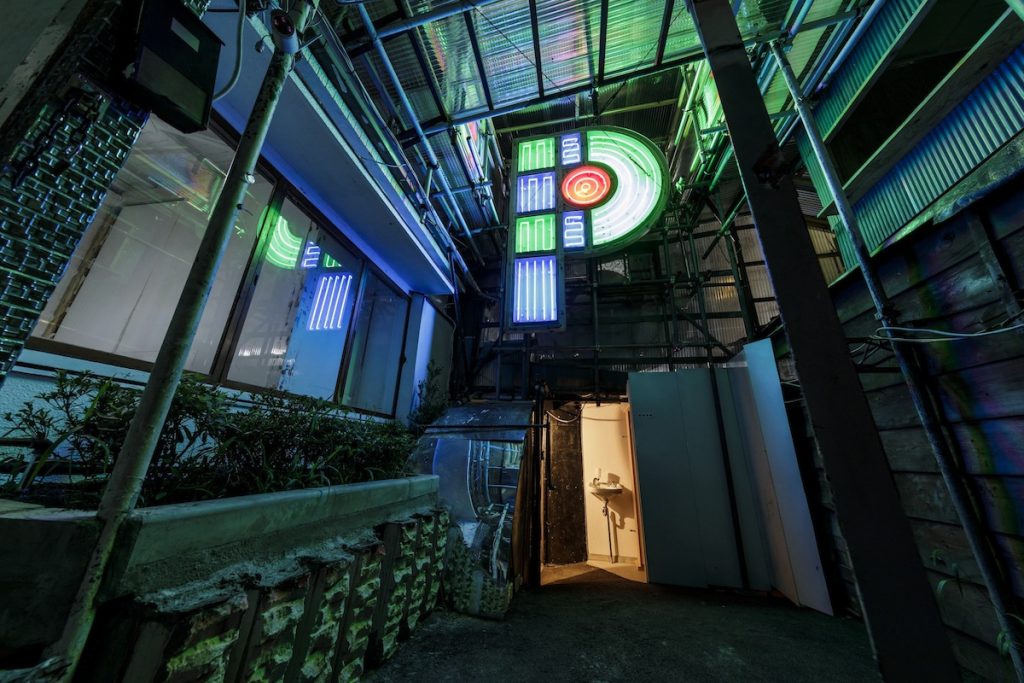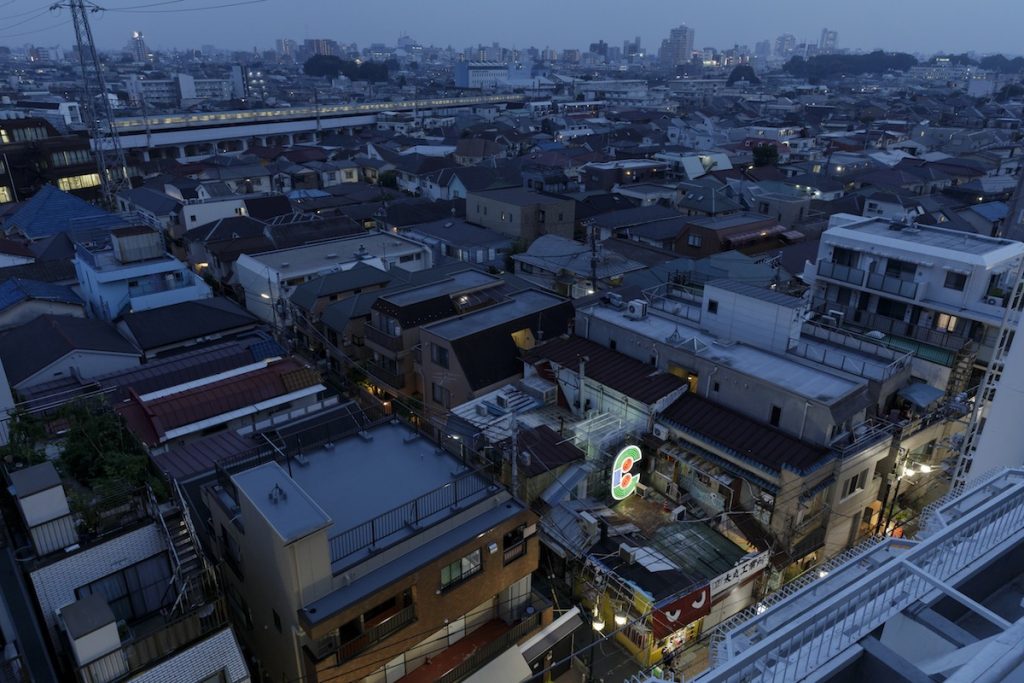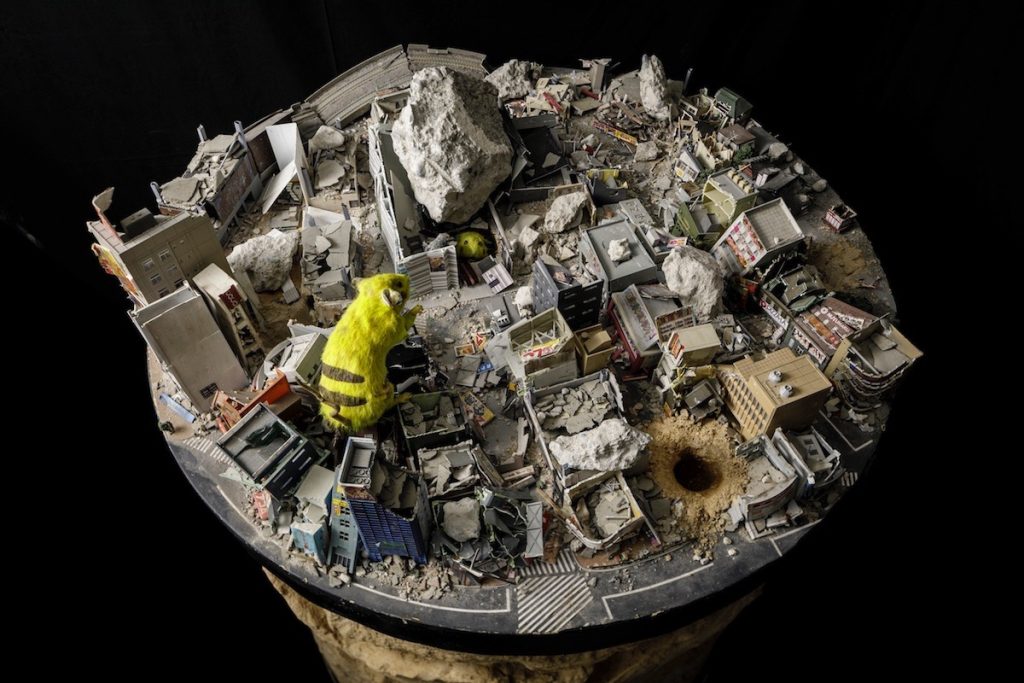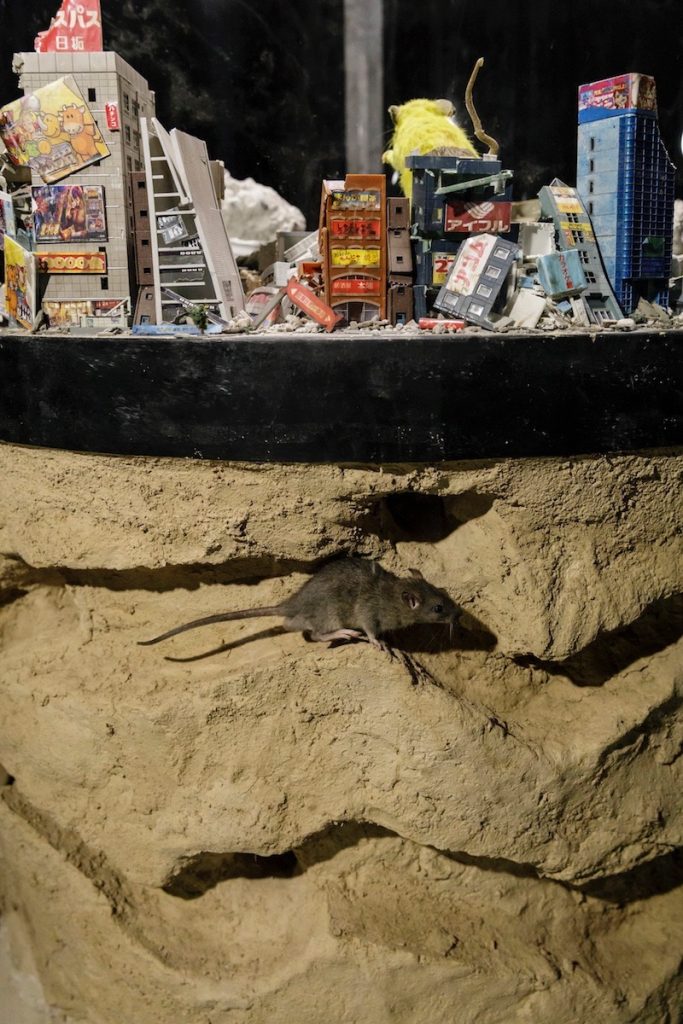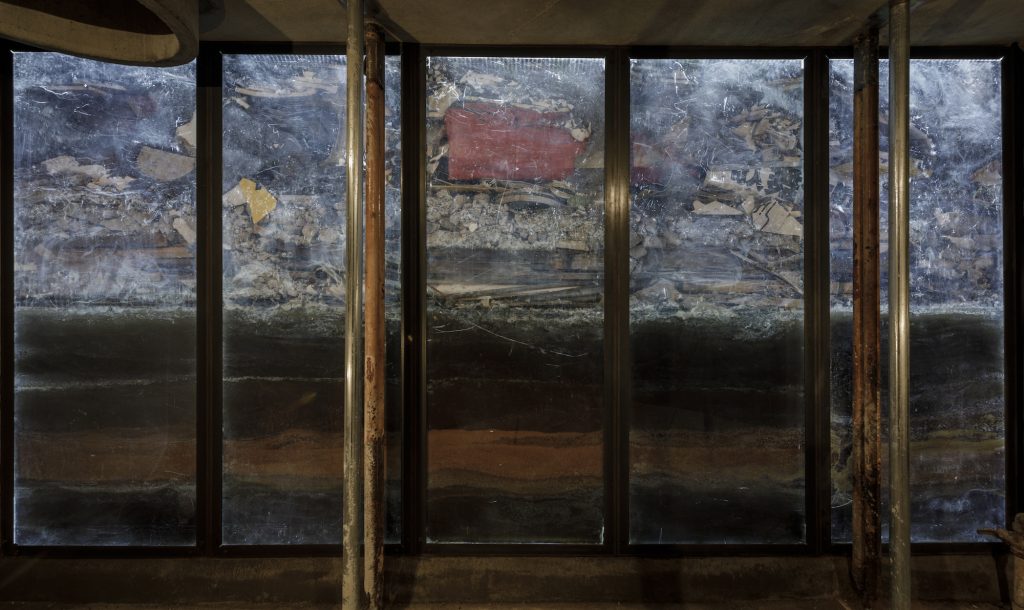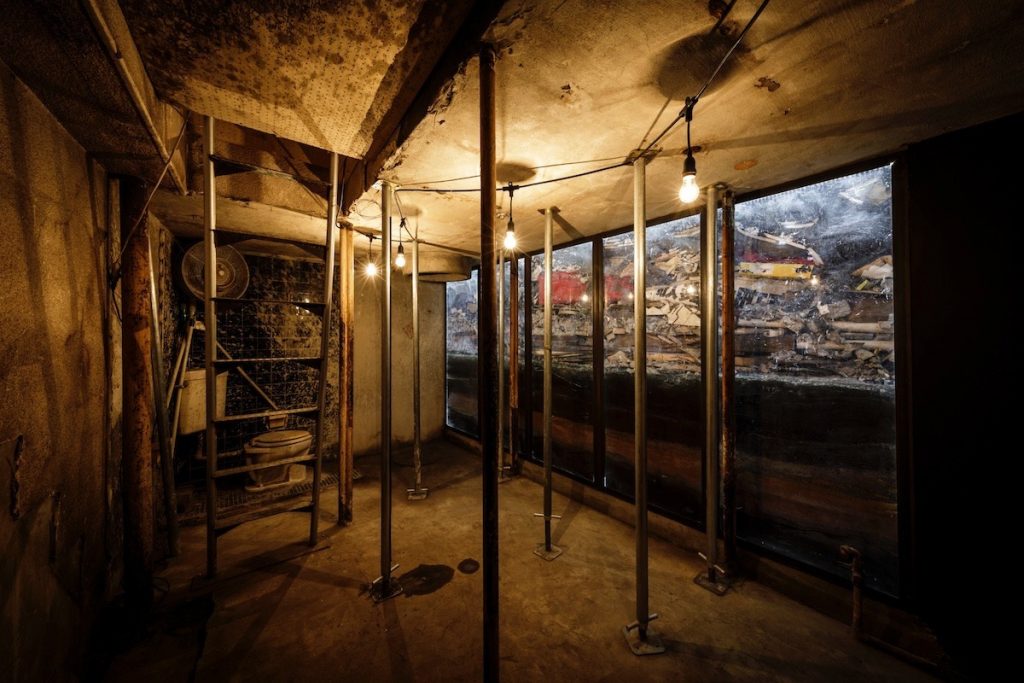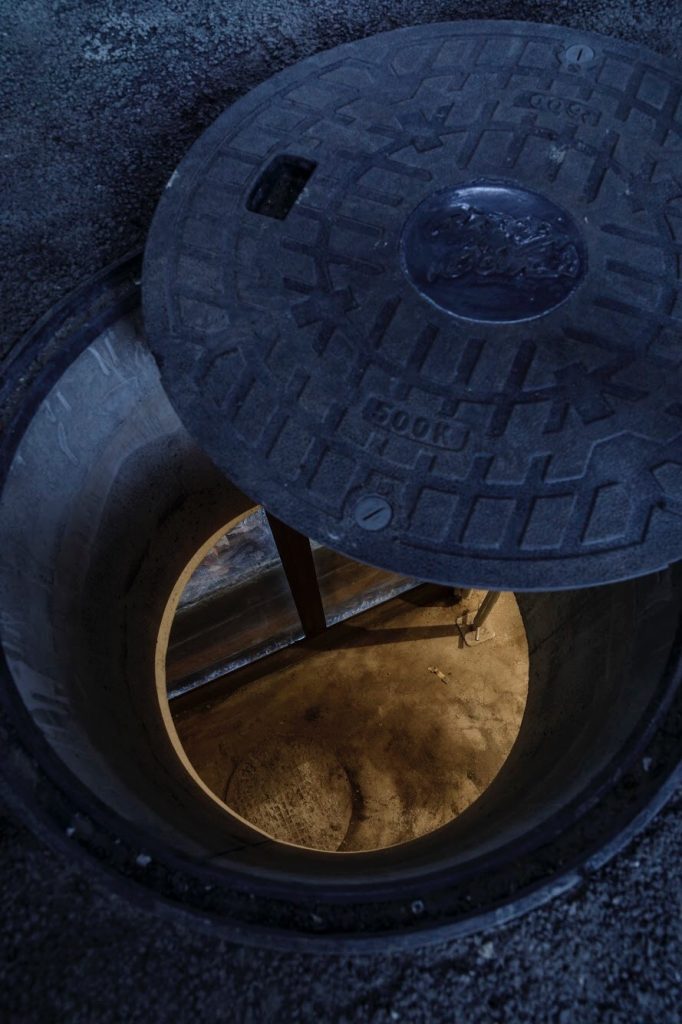A project consisting of a solo exhibition “So see you again tomorrow, too?” held at the Kabukicho Shopping District Promotion Association Building in 2016, another solo exhibition “Paving the Street” held at Koenji Kitakore Building in 2017, and the parties and events held at those venues. The former exhibition, which took place in the midst of Tokyo’s massive redevelopment in advance of the 2020 Tokyo Olympics, used the entire Kabukicho Shopping District Promotion Association Building just before its demolition. The works on display were not removed from the building after the exhibition, but instead destroyed as the building was dismantled. After that, Chim↑Pom picked up the dismantled parts of the building, including the remnants of their work and brought it to their own studio in Kitakore Building. They used those materials to produce permanent works such as Chim↑Pom Street, and The Road Show.
Statement
Announcing the opening of the street
Chim↑Pom are pleased to announce the opening of the street of Kitakore Building, which we have been working on since 2017. Named as Chim↑Pom Street, it will be open to the general public at all hours and anyone may enter for free from nearby public streets and driveways.
Kitakore Building located in Koenji is estimated to have been built around 70 years ago. Since two buildings were joined as one, it has enjoyed a rich history of serving as a psychic facility, a brothel, an abandoned building, a bar complex, a fashion building, and more. The building resembles a kind of shack, with its residents constantly extending and remodeling it in a DIY fashion.
Chim↑Pom also started renting out the space in 2014 and since then we have operated our own studio, gallery, and shop among others. The street space, which Chim↑Pom and architect Takashi Suo jointly open, was developed to reproduce the old street that seems to have existed between the two original buildings. However, since its view also includes the long history of the building being used as an indoor space, we constructed it so that at first glance it remains ambiguous whether it is a private or public space.
In other words, it is a public space created inside of a private space. We hope that many of you will join us in cultivating such a street. Incidentally, Chim↑Pom has long been known as an artist collective that repeatedly uses public space and public art for personal use without permission, and as such we take pride in our various approaches to the concept of the public. So at the moment, we do not plan to set rules for using Chim↑Pom Street. However, if neighbors, other residents of the Kitakore Building, and even we Chim↑Pom feel the need to do so at any point, we will set rules.
The space is too narrow for cars to pass through, but we may set a speed limit in times of traffic. If we feel the danger of a fire hazard, we may ban smoking on the street. If tasteless posters or graffiti become rampant, we may ban posters and vandalism.
We do not have enough time to strengthen patrols, but before advocating for the public this is a rental property first and foremost, so there may well be a chance that we infer the landlord’s feelings.
In addition, we will host an exhibition-style event to celebrate the opening of the street. As the second part of Chim↑Pom’ s solo exhibition, “So see you again tomorrow, too?” which was held in Kabukicho Shopping District Promotion Association Building in Shinjuku in 2016, this exhibition centers on the concept of “scrap and build” that is currently overdone in Tokyo. We have named this series of shows as the “Sukurappu ando Birudo Project.” Remnants of the artworks––which were kept in the building and half or completely destroyed during the demolition after the “So see you again tomorrow, too?” exhibition––turned into material for the new works for this exhibition. Kitakore Building also became part of these works through DIY construction.
Compared to Kabukicho Shopping District Promotion Association Building which possessed a public element and was constructed with sturdy concrete, Kitakore Building carries completely oppositional elements. While Kitakore Building draws a gap and bears a contradiction within the project, it is presented as a kind of space to process the building’ s demolition likely occurring in the not so distant future.
Some of the works will not be complete in its final form for this exhibition, but will be presented as finished works at their own timing or after the exhibition. Especially with regards to Chim↑Pom Street, its character will transform depending on how you all will use it during the opening event.
We look forward to seeing you at the opening and on the street.
Chim↑Pom
Sukurappu ando Birudo Project Paving the Street (Chim↑Pom with Takashi Suo) (2017)
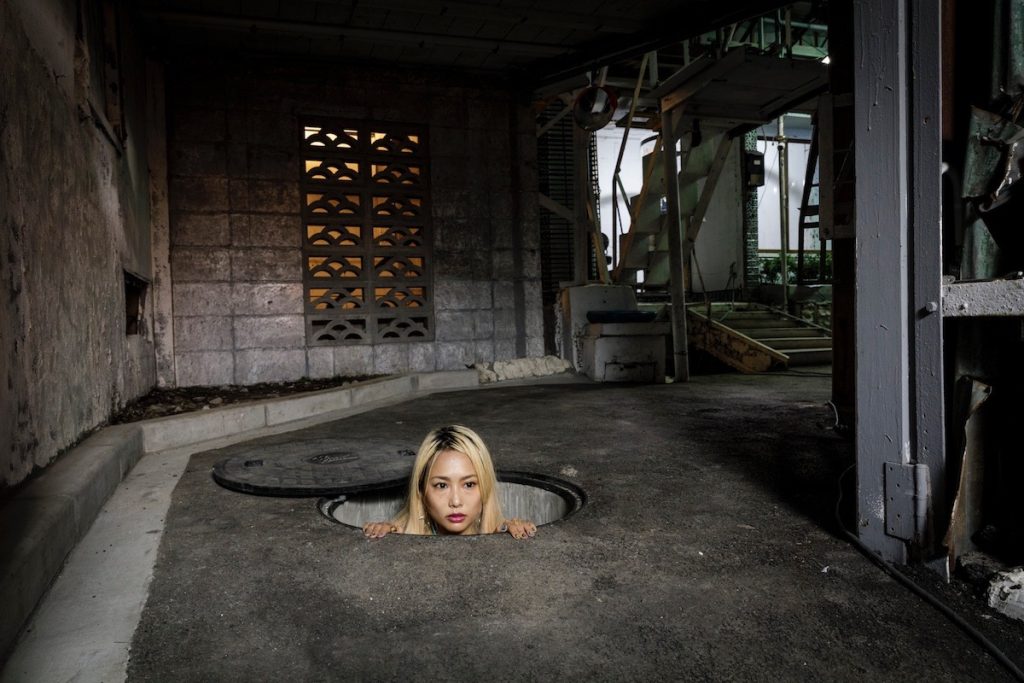
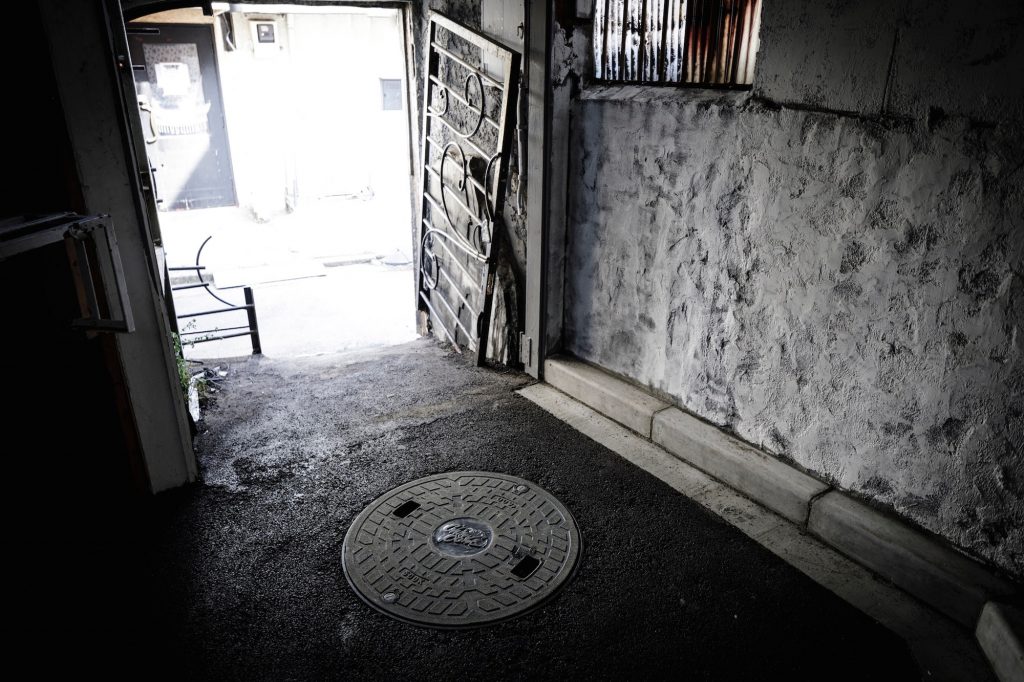
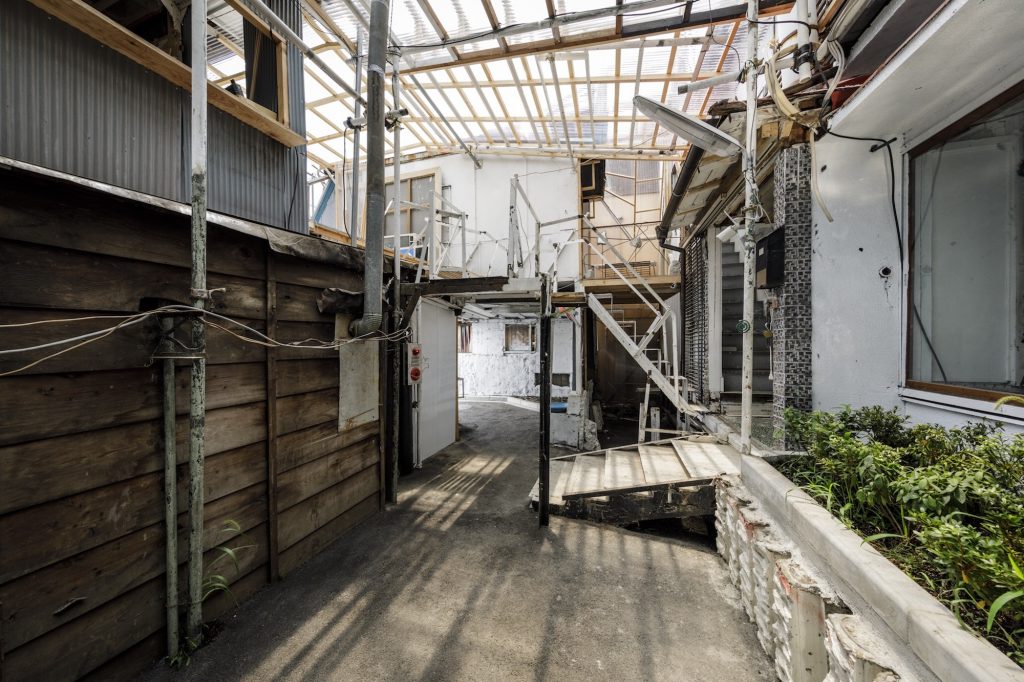
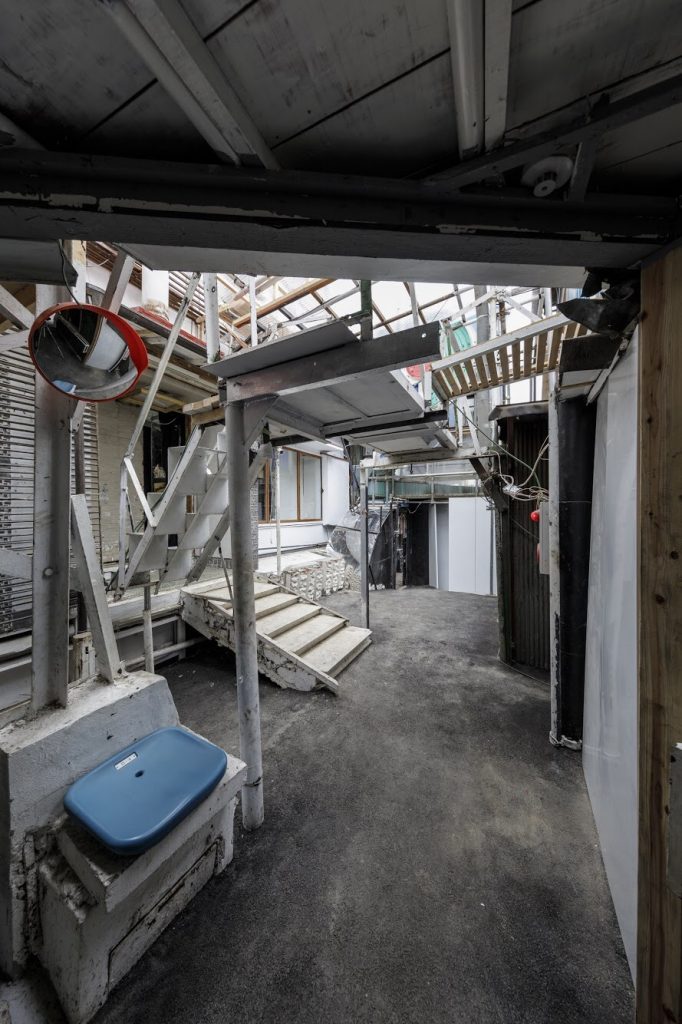
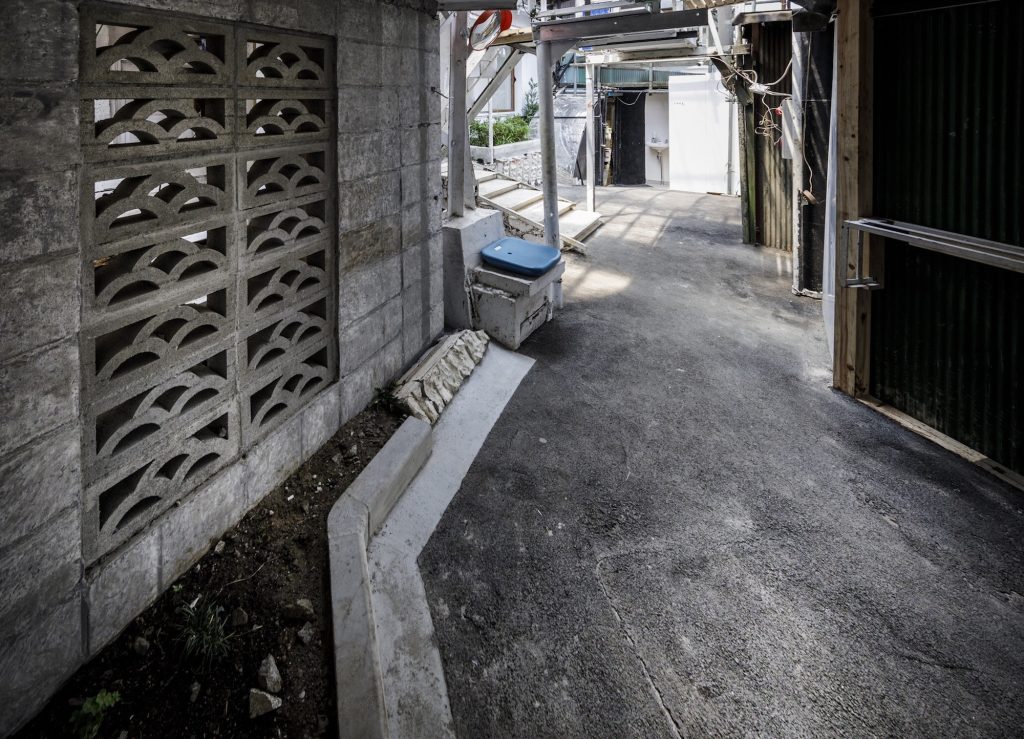
![Mirai’s Reclaimed Land, 2017, After digging a hole inside Kitakore Building, Chim↑Pom buried Drawing Mirai, a blueprint drawing depicting sex worker Mirai’s silhouette that was originally created for “So see you again tomorrow, too?” With the motif of a young person who calls herself “Mirai” (meaning “future” in Japanese) and the rapid degradation of cyanotype as a material, they incorporated elements of burials, time capsules, and aging into their process. Furthermore, this spot was determined as the foundation of the Kitakore Building’s renovation, and a teisoseki [foundation stone] was buried into the asphalt as a token. Since 2016, this piece has been transformed from Drawing Mirai → destroying the drawn Mirai → burying the destroyed Mirai – it will reach its final form when it is excavated during the demolition of Kitakore Building in the future.](https://mujin-to.sakura.ne.jp/wp/wp-content/uploads/9E8DBC0D-8EA8-4683-B37C-62894FEDCBFF-1024x683.jpg)
